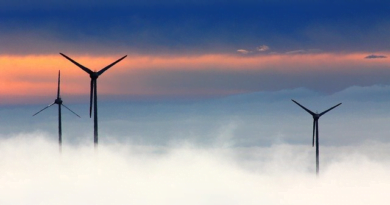Matosinhos Manifesto
Context:
Recently, the European Space Agency (ESA) council approved a manifesto to accelerate the use of space in Europe to tackle the urgent and unprecedented societal, economic and security challenges faced by Europe and its citizens.
Contents
What is Matosinhos Manifesto
- Matosinhos Manifesto is the resolution adopted unanimously by the 22 member states of the ESA.
- The Intermediate Ministerial Meeting that was held in Matosinhos, Portugal.
- It lays down a vision for the continent in terms of maintaining and expanding its activities in space.
- It outlines three urgent initiatives called Accelerators and two mission proposals:
- The initiatives involve measures to tackle climate change, respond to natural disasters, and to protect spacecraft from orbital debris and space weather.
- The large-scale nature and fast pace of the climate crisis and other challenges means that no European nation will be able to effectively address them alone.
Aim: To tackle the urgent and unprecedented societal, economic and security challenges faced by Europe and its citizens.
The manifesto defines three “accelerators” to further advance Europe’s space ambitions:
First Initiative:
- The first initiative involves improving the ability of Earth-observing satellites, to provide higher-quality data that can be used to tackle the climate crisis.
- Aim:
- To better understand the current state of Earth by focusing on space for a green future.
- To develop scenarios and solutions for sustainable life on this planet.
- To contribute effectively to achieving climate neutrality.
- The document proposes the creation of a “digital twin of earth”
- Digital twin is a simulated replica that can be used for modelling and in order to predict events such as floods, fires, or droughts years in advance.
- It also helps in eliminating worldwide greenhouse emissions by 2050.
Second Initiative:
- The second accelerator is called “Rapid and Resilient Crisis Response”.
- Aim: To support governments to act decisively on crises facing Europe, from flooding and storms to wildfires.
- It calls for more intensive use of space-collected data — such as imagery from satellites — in order to deal with natural disasters.
- Applications could range from monitoring to the coordination of rapid response units.
Third initiative
- The third accelerator is “Protection of Space Assets”
- Aim: To safeguard ESA astronauts and assets from interference by space debris and space weather.
The mission proposals are as follows:
- The main goal of this mission would be to look for signs of alien life throughout our Solar System.
- The two missions aim to establish the ESA’s own system to launch astronauts into space and to probe Jupiter’s frozen moon Enceladus.
- The first calls for Europe to establish its own mechanism to launch astronauts into space.
- The second envisions sending an ESA probe to one of the moons of Jupiter or Saturn to return samples to Earth.
Significance:
- It will tackle the urgent and unprecedented societal, economic and security challenges faced by Europe and its citizens.
- The large-scale nature and fast pace of the climate crisis and other challenges means that no European nation will be able to effectively address them alone.
- Space has enormous untapped potential to help tackle these challenges, and an acceleration in developing European space capability is now urgently needed.
European Space Agency (ESA)
- The ESA is an intergovernmental organisation that was formed in 1975 with the aim of developing Europe’s space capabilities.
- The organisation has 22 member states — Austria, Belgium, the Czech Republic, Denmark, Estonia, Finland, France, Germany, Greece, Hungary, Ireland, Italy, Luxembourg, the Netherlands, Norway, Poland, Portugal, Romania, Spain, Sweden, Switzerland and the United Kingdom. Slovenia, Latvia and Lithuania are Associate Members.
Source: Indian Express
You can find many articles on SPACE (part of GS III) in our website. Go through these articles share with your friends and post your views in comment section.
Discover more from Simplified UPSC
Subscribe to get the latest posts sent to your email.



